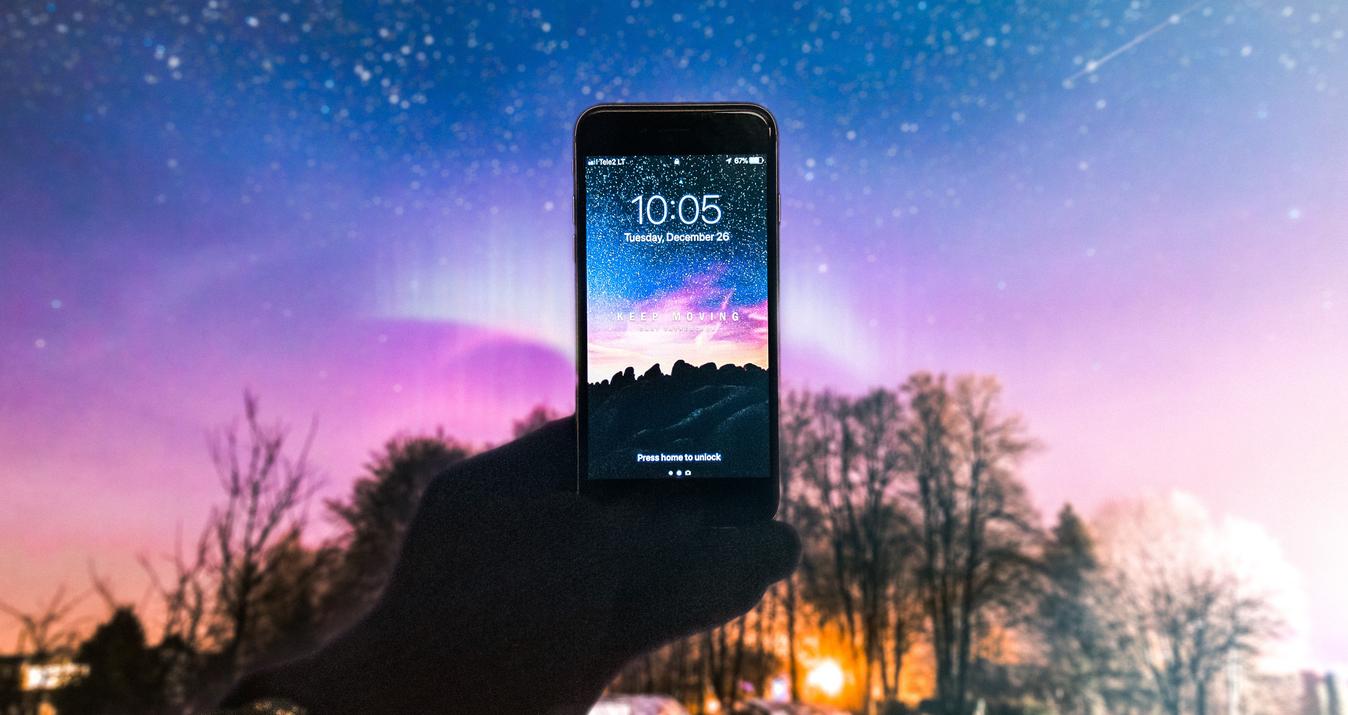What is Color Temperature and Why is it Important for Photography?
August 03, 2023

Learn About Color Temperature And How To Use It To Create Stunning Photos. This Guide Will Cover Everything You Need To Know, From The Basics To Advanced Techniques.
If you're a photographer who takes and processes your own photos, you've probably encountered the term "color temperature" at least once. Color temperature in photography refers to measuring the colors of a light source in degrees Kelvin (K), ranging from warm tones (reddish-orange) to cool tones (bluish). Though seemingly small, this difference can have a significant impact on the quality and emotional resonance of your photos, influencing their mood, atmosphere, and visual storytelling.
In this article, we'll delve deeper into this crucial aspect of photography, exploring the distinctions between warm and cool tones. Additionally, we'll share some post-processing techniques to infuse more atmosphere into your photos. And as a bonus, we'll introduce you to Luminar Neo, an AI-based software that allows you to change the color of a photo with just a few clicks.
Advanced yet easy-to-use photo editor
Get Luminar Neo NowReady to enhance your skills and create unforgettable photos? Let's embark on this enlightening journey together!
What Is Color Temperature in Photography

As we mentioned earlier, this term refers to the measurement of the color of light emitted by different sources. It is quantified on a color temperature scale in degrees Kelvin (K). On this scale, you'll find warm shades with reddish-orange tones, ranging from around 2000K to 4000K, and cool tones with bluish hues, around 5000K to 10000K.
The relevance of temperature in photography lies in its ability to influence the overall mood and ambiance of your images. By grasping the concept of temperature and the scale it encompasses, photographers can make deliberate choices to capture the perfect lighting conditions that complement their creative vision and deliver striking results.
Warm vs. Cool Photography

Picture temperature in photography is not just a technical detail; it's a potent tool that enables photographers to convey emotions and weave compelling narratives through their images. By purposefully choosing warm or cool picture temperatures, photographers can evoke specific feelings and create stories that resonate with viewers.
Warm photography embraces lower color temperatures on the scale (around 2000K - 4000K). Imagine a golden sunset casting its warm, orange glow over a tranquil beach scene. The inviting hues of a cozy fireplace or the soft, candlelit ambiance of a romantic dinner — are all instances where warm temperatures heighten the sense of comfort and intimacy in the photographs.
Conversely, cool photography thrives on higher color temperatures (around 5000K - 10000K). Picture the serene blue hues of a frozen lake surrounded by snowy landscapes. The crisp, cool light of a moonlit night or the refreshing tones of a peaceful morning mist—these scenarios demonstrate how cool temperatures evoke a sense of calmness and tranquility.
To navigate this intricate world, photographers often refer to a color temperature chart. This helpful tool connects specific temperatures with the emotions they convey. By consciously choosing between warm and cool photography, you can infuse your images with the desired mood and atmosphere, taking your photography to new heights of artistic expression and emotional impact.
White Balance Settings and Color Temperature Adjustment

To achieve stunning and true-to-life shots, mastering photography color balance settings and color temperature adjustment is crucial. These elements play a vital role in ensuring your images look captivating and faithful to the scene you captured.
White balance is the process of neutralizing color casts in your photos, making sure that white appears genuinely white, regardless of the light source. By selecting the best light temperature for photography and adjusting the color balance, you can accurately represent the colors in your image, preserving their natural beauty.
For example, when shooting under warm incandescent lighting, proper white balance prevents a yellowish-orange tint from distorting your photo. Similarly, under cool fluorescent lighting, adjusting the white balance helps eliminate an unnatural greenish cast from affecting your images.
Color balance photography refers to distributing colors evenly across the entire image. By fine-tuning the temperature, you can create harmonious compositions that resonate with viewers. Whether you're capturing vibrant colors in a bustling cityscape or serene tones in a misty forest, understanding and controlling white balance and temperature empower you to craft visually compelling images that evoke emotions and leave a lasting impression.
Paying attention to white balance settings and temperature adjustment ensures that your photos faithfully reflect the scene's essence, resulting in a collection of visually appealing images that truly represent the beauty of the moment captured.
Creative Experiments with Mixed Lighting Sources for Dynamic Results

In photography, venturing into the realm of mixed lighting sources can lead to dynamic and visually captivating outcomes. Combining various light types and color temperatures provides photographers with a canvas for artistic experimentation, resulting in images that stand out and leave a lasting impression.
Imagine capturing a cityscape at dusk, where the warm glow of streetlights mingles with the cool hues of fading daylight. By embracing this interplay of warm and cool lighting, you can craft a vibrant and atmospheric scene, showcasing the bustling energy of the city transitioning from day to night.
Moreover, incorporating artificial light sources alongside natural ones offers opportunities for creative expression. A portrait session in an urban setting could involve using warm, artificial lights to cast intriguing shadows against the cool, moonlit backdrop. This artistic juxtaposition not only adds depth to your subject but also introduces a sense of drama and intrigue to the overall composition.
The beauty of working with mixed lighting sources lies in their ability to enhance the mood and ambiance of your photographs. By skillfully combining warm and cool tones, you can evoke a myriad of emotions - from coziness and intimacy to tranquility and mystery - elevating the storytelling power of your images.
While experimenting with mixed lighting can be challenging, understanding how different light sources interact and mastering white balance settings and color temperature adjustments will empower you to create mesmerizing visuals. Embrace the possibilities that arise from embracing a diverse lighting palette, and you'll uncover a world of creativity and artistry within your photography.
The Art of Color Grading

Color grading is a transformative post-processing technique that enables photographers to add depth, emotion, and style to their images. Beyond simple color correction, grading allows you to infuse your photographs with a unique artistic touch, elevating your visual storytelling to new heights.
Setting the Mood
Color grading gives you the power to set the mood and atmosphere of your images by selectively adjusting the colors. Warm tones can evoke feelings of intimacy and nostalgia, while cool tones create a sense of calmness and tranquility. By carefully choosing the palette, you can shape the emotional impact of your photographs and guide viewers through a captivating visual journey.
Creating Consistency and Cohesion
Color grading allows you to establish a consistent look and feel across your photography portfolio. Developing a signature color grading style can strengthen your visual brand, making your work instantly recognizable to your audience. Consistency enhances the coherence of your body of work, ensuring that each image contributes to a cohesive narrative.
Enhancing Storytelling Elements
With color grading, you can accentuate specific elements in your photos, directing the viewer's attention to the key aspects of your composition. Whether it's highlighting the vibrant colors of a subject or darkening the background to emphasize a focal point, it empowers you to enhance the storytelling elements in your images.
Post-processing Color Temperature Correction with Luminar Neo

Luminar Neo is an advanced photo editor equipped with artificial intelligence tools. With this software, you can significantly improve the quality of your photos with just a few clicks. And there is no exaggeration here!
With a wide range of basic tools, Luminar Neo allows you to adjust the color temperature of your photos effortlessly. Fine-tune the warmth or coolness to accurately convey the mood and atmosphere you envisioned during the shoot.
But that's not all! Luminar Neo takes color manipulation further with its Photo Filter feature. Simulating color filters traditionally attached to camera lenses, this filter lets you accentuate complementary colors and add creative twists to your photos. Warm it up for a cozy feel or cool it down for a calming effect. It's all up to you to create your own vision!
A 7-day Free Trial of Luminar Neo with no obligation
Get it now!Conclusion
Color temperature and grading are powerful tools in photography, enabling you to set the mood, tell captivating stories, and add an artistic touch. By mastering these techniques, you can create unforgettable images that leave a lasting impression.
Embrace experimentation and advanced editing software like Luminar Neo to elevate your photography journey. Let vibrant colors and artistic expression enrich your work, allowing you to connect with your audience on a deeper level. With warm tones evoking intimacy and nostalgia, and cool tones creating calmness and tranquility, you can infuse your photos with emotions and elevate your visual storytelling.
Incorporate color grading to add a unique touch to your photographs, establishing a consistent and recognizable style. With Luminar Neo's intuitive features and AI-powered tools, post-processing becomes a seamless experience, empowering you to unleash your creativity and create images that stand out from the crowd. Master color temperature and grading to capture hearts and minds through your captivating photography.






